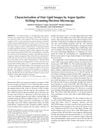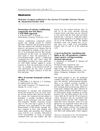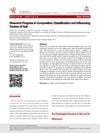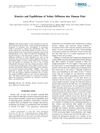A Novel Method for Visualizing Hair Lipids at the Cell Membrane Complex: Argon Sputter Etching/Scanning Electron Microscopy
January 2006
in “
International Journal of Cosmetic Science
”
TLDR The method shows how hair lipids form specific patterns and their roles in hair structure.
The study introduced a novel method for visualizing hair lipids at the cell membrane complex (CMC) using scanning electron microscopy (SEM) combined with argon sputter etching (ASE). This technique revealed specific circular and stitch patterns at the hair cortex, with the stitch patterns (SP) being linked to hair lipids. The SP disappeared when hair fibers were treated with organic solvents but reappeared after incubation with melting lipids, indicating the role of hair lipids in forming these structures. The process involves argon ions generating heat, causing CMC lipids to melt and ooze to the surface, where they undergo chemical changes to form the convex SP. This method allowed for the detailed characterization of hair lipids' structure and localization, enhancing the understanding of the CMC's roles and functions in human hair.








